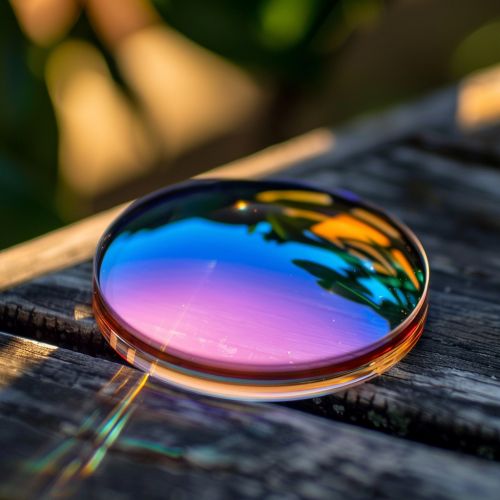Photochromic Materials
Introduction
Photochromic materials are a class of substances that have the unique ability to change their color when exposed to light. This phenomenon, known as photochromism, is a reversible process that involves the absorption of light energy, leading to a change in the molecular structure of the material. The color change is not permanent and can be reversed when the light source is removed or changed.


History and Development
The concept of photochromism was first observed in the late 19th century, but it was not until the 1950s that the first practical applications of photochromic materials were developed. The pioneering work in this field was carried out by scientists at the Corning Glass Works, who developed the first commercially viable photochromic glasses.
Photochromic Mechanism
The color change in photochromic materials is a result of a photochemical reaction. When the material absorbs light, it undergoes a chemical reaction that changes its molecular structure. This change in structure alters the way the material absorbs and reflects light, resulting in a change in color. The reaction is reversible, meaning that when the light source is removed, the material returns to its original color.
The exact mechanism of the photochromic reaction varies depending on the type of material. In some cases, the reaction involves the formation of a new chemical species, known as a photoproduct, which has a different color than the original material. In other cases, the reaction involves a change in the electronic state of the material, leading to a change in color.
Types of Photochromic Materials
There are several types of photochromic materials, each with their own unique properties and applications.
Organic Photochromic Materials
Organic photochromic materials are based on organic compounds, such as spiro compounds, naphthopyrans, and fulgides. These materials are often used in applications such as eyewear and windows, due to their ability to change color rapidly in response to changes in light conditions.
Inorganic Photochromic Materials
Inorganic photochromic materials are based on inorganic compounds, such as silver chloride and silver halides. These materials have a slower response time than organic photochromic materials, but they are more durable and have a longer lifespan.
Hybrid Photochromic Materials
Hybrid photochromic materials are a combination of organic and inorganic materials. These materials combine the rapid response time of organic materials with the durability and longevity of inorganic materials.
Applications of Photochromic Materials
Photochromic materials have a wide range of applications, from everyday items like eyewear and windows, to specialized uses in technology and research.
Eyewear
One of the most common applications of photochromic materials is in eyewear. Photochromic lenses can automatically adjust their color in response to changes in light conditions, providing protection from harmful UV rays and reducing eye strain.
Windows and Skylights
Photochromic materials are also used in windows and skylights, where they can automatically adjust their transparency in response to changes in light conditions. This can help to regulate the temperature inside a building and reduce the need for artificial lighting.
Technology and Research
In the field of technology and research, photochromic materials are used in a variety of applications, from data storage devices to biological research. For example, photochromic materials can be used to create optical switches and memory devices, which can store and retrieve data using light. In biological research, photochromic materials can be used to track and visualize biological processes.
Future Directions
The field of photochromic materials is a rapidly evolving area of research, with new materials and applications being developed all the time. Future directions in this field may include the development of new types of photochromic materials with improved properties, such as faster response times, longer lifespans, and greater durability. There is also potential for the development of new applications for photochromic materials, in areas such as renewable energy, healthcare, and nanotechnology.
